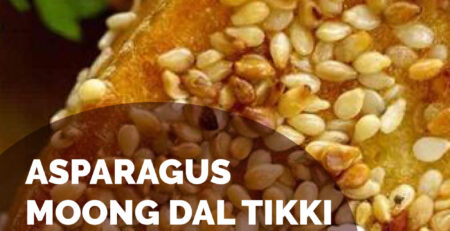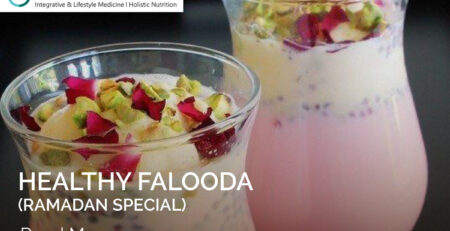Rainy Days, Hearty Bowls: Celebrate and Nourish Your Soul with Delectable Monsoon Broths

Monsoon Vegetable Elixir Sip of Wellness
Ingredients
- 2 cups assorted vegetables, roughly chopped (carrots, celery, onions, garlic, beans, mushrooms)
- 8-10 cups of water
- A bay leaf
- A handful of fresh herbs, thyme, parsley, oregano, rosemary
- 1 tsp whole peppercorns
- 1/2 tsp turmeric powder
- Salt to taste
- 1/2 tbsp cold-pressed coconut oil
Instructions
- Heat the oil in a large pot.
- Add the chopped onions, garlic to the pot and sauté until they become fragrant and lightly browned.
- Add the rest of the vegetables to the pot and continue sautéing for a few more minutes.
- Pour in the water, ensuring that the vegetables are fully submerged.
- Add the bay leaf, fresh herbs, peppercorns, turmeric powder, and salt to the pot.
- Bring the mixture to a boil, then reduce the heat to low and let it simmer uncovered for about 1 hour. Stir it occasionally.
- After the simmering time, remove the pot from the heat and let it cool for a bit.
- Strain the broth using a fine mesh sieve or cheesecloth into a large bowl, separating the vegetables from the liquid.
- Taste the broth and adjust the seasoning if needed by adding more salt or herbs.
- Allow the broth to cool completely before storing it in airtight containers in the refrigerator for up to 4 days for any time use.
Recipe tips and variations
- You can use vegetable broth as a base for soups, stews, and sauces, or simply enjoy it as a warm and comforting drink during the monsoon season.
- After sieving the broth, you can use leftover vegetables to make a sabzi or puree in a blender or food processor and mix them with ingredients like yogurt, to create a tasty dip or spread. Serve it with crackers, bread, or vegetable sticks.
Notes
- Vegetable broth is a powerhouse of vitamins, including vitamin A, vitamin C, vitamin K, and several B vitamins such as folate (vitamin B9).
- Garlic and onions are particularly beneficial as they contain compounds like allicin (found in garlic) and quercetin (present in onions). These compounds have antimicrobial, antiviral, and antioxidant effects, which help strengthen the immune system and protect you against infections.
- Furthermore, the variety of vegetables used in broth contributes different phytonutrients, such as flavonoids, carotenoids, and sulfur compounds. These components make vegetable broth rich in antioxidants and also grant it anti-inflammatory and immune-boosting properties.
Nutrition
Soulful Chicken Elixir – Monsoon’s Bounty
Ingredients
- 1 whole chicken, organic
- 10 cups of water
- 1 onion, quartered
- 2 carrots, chopped
- 2 celery stalks, chopped
- 4 cloves of garlic, crushed
- 1- inch piece of ginger, sliced
- 1 bay leaf
- Salt and pepper to taste
- Herbs like parsley or thyme, as per availability
Instructions
- Rinse the chicken thoroughly under cold water and place it in a large pot.
- Add water, onion, carrots, celery, garlic, ginger, bay leaf, salt, and pepper to the pot. Bring the mixture to a boil.
- Once it reaches a boil, reduce the heat to low and let it simmer for about 2 hours.
- After a simmering time, remove the chicken from the pot and set it aside to cool.
- Strain the broth using a fine mesh sieve or cheesecloth to remove any solids.
- Shred the cooked chicken meat from the bones and add it back to the broth.
- Adjust the seasoning with additional salt and pepper if needed.
- Add fresh herbs like parsley or thyme for flavor and garnish. This is optional.
Recipe tips and variations:
- When making your chicken broth, opt for fresh and organic chicken parts like carcasses, backs, wings, or even a whole chicken. This ensures the best flavor and quality for your broth.
- The chicken broth can be enjoyed on its own or used as a versatile base for other soups, and stews, or as a flavorful cooking liquid for rice or noodles.
- For added flavor and depth, consider incorporating additional ingredients like ginger, lemongrass, or star anise into your broth. These aromatic additions can elevate the taste profile of your chicken broth.
- Store any leftover broth in the refrigerator for a few days, or freeze it for longer-term use. This way, you'll always have a nourishing and convenient ingredient on hand for future recipes.
Notes
- Chicken broth is rich in electrolytes, including potassium and sodium. These electrolytes are essential for maintaining fluid balance, supporting nerve function, and facilitating muscle contractions.
- During the simmering process, collagen present in the chicken parts breaks down, resulting in the release of gelatin into the broth. Gelatin contains important amino acids like glycine and proline, which offer numerous health benefits. These amino acids can aid in digestive health, promote skin elasticity, support joint health, and assist in muscle recovery.
- Chicken broth also contains various minerals such as calcium, magnesium, phosphorus, potassium, and sodium. These minerals play crucial roles in a range of bodily functions, including promoting bone health, supporting nerve function, facilitating muscle contractions, and maintaining fluid balance.
Nutrition
|
From a pimple to cancer, our You Care Wellness Program helps you find a way Talk to our integrative team of experts today 18001020253 |









Leave a Reply